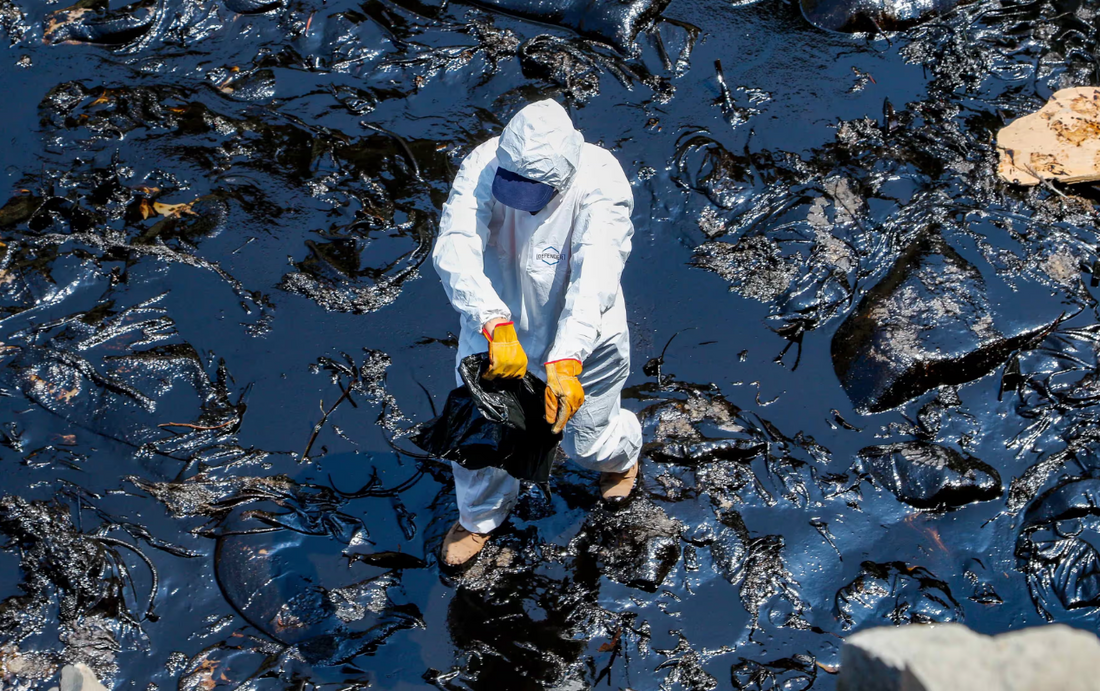
Massive Oil Spill at La Pampilla Refinery: A Devastating Environmental Disaster
Ashton RouthierShare
Overview
The oil spill occurred during the unloading of crude oil at the La Pampilla refinery in Callao, Peru, on the morning of January 15, 2022. Although initially reported as a minor spill of 7 gallons, it was later determined that approximately 6,000 barrels of oil had been released into the sea. This severe contamination posed immediate threats to marine life and the local ecosystem, with long-term environmental damage expected to be substantial. Emergency response teams, including Repsol, local authorities, environmental organizations, and volunteers, have deployed containment booms and skimmers, focusing on recovering the spilled oil and mitigating environmental damage.

In the early hours of January 15, 2022, a significant environmental disaster unfolded at the La Pampilla refinery in Callao, Peru. During the process of unloading crude oil, a massive spill occurred, initially reported by the refinery's operator, the Spanish company Repsol, as a minor incident involving just 7 gallons of oil. However, as the morning progressed, it became evident that the spill was far more severe than initially stated, with an estimated 6,000 barrels of crude oil dumped into the sea.
The Incident
The oil spill began around dawn on January 15, 2022, as Repsol was unloading crude oil at its La Pampilla refinery, one of the largest in Peru. Early reports from Repsol downplayed the severity of the incident, claiming that only a small quantity of oil had leaked. However, subsequent assessments revealed the true extent of the spill, with thousands of barrels of crude oil contaminating the surrounding marine environment.
Environmental Impact
The spill's impact on the marine ecosystem has been catastrophic. The release of 6,000 barrels of crude oil into the sea has led to widespread contamination of water and coastal areas. Marine life, including fish, birds, and other wildlife, faces immediate threats from the toxic exposure. The oil slick has spread over a large area, affecting both the natural habitat and local communities that depend on the sea for their livelihood.
Response and Cleanup Efforts
In response to the disaster, Repsol and local authorities initiated emergency containment and cleanup operations. Booms and skimmers were deployed to limit the spread of the oil and recover as much of the spilled crude as possible. Despite these efforts, the sheer volume of the spill has made the cleanup process extremely challenging. Environmental organizations and volunteers have joined the effort, working tirelessly to mitigate the damage and rescue affected wildlife.
Long-term Consequence
The long-term environmental consequences of the spill are expected to be severe. The contamination of marine ecosystems can lead to prolonged disruptions in the food chain, affecting both wildlife and human populations. Fishing and tourism, critical components of the local economy, are likely to suffer significant setbacks. The incident has also sparked outrage among environmentalists and the public, calling for stricter regulations and better oversight of oil operations to prevent future disasters.
https://en.wikipedia.org/wiki/2022_Callao_oil_spill